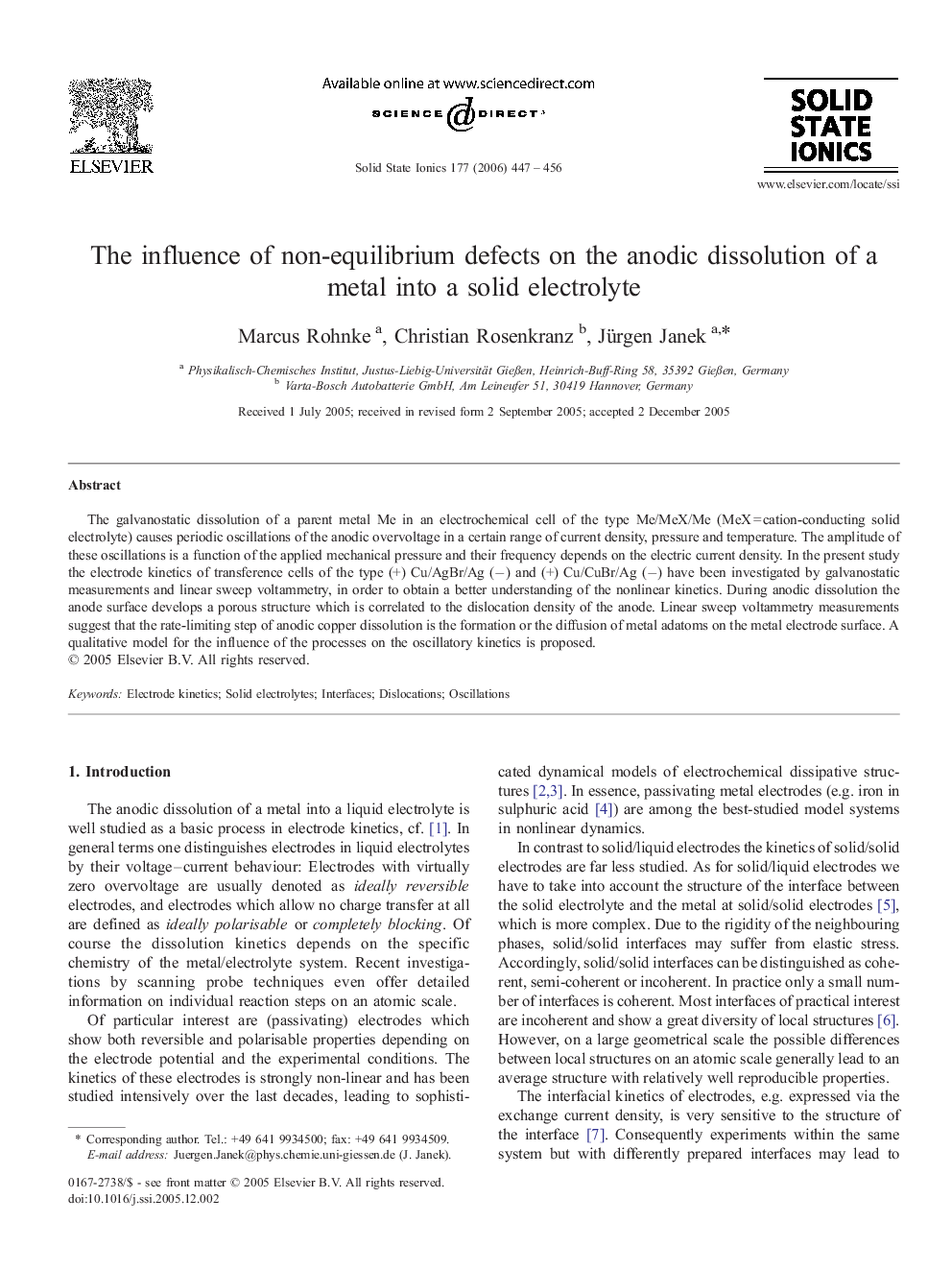| Article ID | Journal | Published Year | Pages | File Type |
|---|---|---|---|---|
| 1298422 | Solid State Ionics | 2006 | 10 Pages |
Abstract
The galvanostatic dissolution of a parent metal Me in an electrochemical cell of the type Me/MeX/Me (MeXÂ =Â cation-conducting solid electrolyte) causes periodic oscillations of the anodic overvoltage in a certain range of current density, pressure and temperature. The amplitude of these oscillations is a function of the applied mechanical pressure and their frequency depends on the electric current density. In the present study the electrode kinetics of transference cells of the type (+) Cu/AgBr/Ag (â) and (+) Cu/CuBr/Ag (â) have been investigated by galvanostatic measurements and linear sweep voltammetry, in order to obtain a better understanding of the nonlinear kinetics. During anodic dissolution the anode surface develops a porous structure which is correlated to the dislocation density of the anode. Linear sweep voltammetry measurements suggest that the rate-limiting step of anodic copper dissolution is the formation or the diffusion of metal adatoms on the metal electrode surface. A qualitative model for the influence of the processes on the oscillatory kinetics is proposed.
Related Topics
Physical Sciences and Engineering
Chemistry
Electrochemistry
Authors
Marcus Rohnke, Christian Rosenkranz, Jürgen Janek,
